Social Media, Critics & Economic Changes
[caption id="attachment_362" align="alignleft" width="221"]

Ulrich in Cosmopolitan Magazine[/caption]
Between 1976 and 2017, having reached the summit of culinary glory with 4 and 5 star awards and recognitions, Epicurean Award, Golden Spoon Award, Chaine des Rotisseur 5 Star Award, (Youngest member ever inducted) at Club 41 in Miami Beach, Cafe September’s, Bistro Mezzaluna, Hot Chocolates
and Pa D’s in Fort Lauderdale, Truffles and Martini’s Bistro in Miami,Cafe Picasso, Modern Art Cafe in Mexico and the USA, as chef and Director of Food & Beverages in the DR, I experienced an epiphany.
I served my last meals at Pa D’s in Lauderdale-by-the Sea, USA in 2017 and retired from professional kitchens at the age of 66 in Switzerland, my native country.
I was told that not all chefs can reach the heights of my reputation (a reputation derived over many years of dedication, commitment, and sacrifices for this profession) or, indeed, realize such profound influence at a relatively young age, my weariness of critics was endemic in a business that mostly provides way too much credit to the opinions of the obtuse and the unqualified.
Skilled critics and writers are one thing, however these days,
self-proclaimed gourmands with questionable credentials and an online connection have the potential to make or break a restaurant supported
by subjective, and on many occasions inaccurate opinions, the increase of the amateur critic became – for skilled chefs, at least – the bitterest of pills to swallow.
Some, bless their well-meaning and ingenuous hearts, instinctively uphold the gushing exaggeration of gastronomic art which all of them, however, mistily comprehend. While others, with equal measures of evading and bias, harm reputations with libelous keystrokes typically bordering on the ridiculous.
Before we continue, let’s get one issue straight. Eating out is not a right. It’s a privilege.
Fun fact: the bulk of the world’s population, according to capitalists live in poverty.
And it’s typically the folks cooking, serving, and laundry your dishes that are among the toughest laboring and also the lowest paid in our civilized society.
Sure, you'll have the posh to treat the family to lunch or an evening out at an eating establishment and expect your plan of perfect preparation, but is it
okay to verbally abuse the trembling sixteen-year-old waiter apprentice as a result of you had to wait for a half-hour on a busy weekend night for your table?
Is it okay to terrorize the busy barman of a brand new French bistro as a result of the operators, in their unacceptable excuse, neglected to stock your favorite Bolivian wine?
Immediate and private insults aside, is it really okay to then jump online, keyboard somebody fists flailing, and condemn a complete business, the living of many low-paid, hardworking staff as a result of you are feeling it your right to vent your petty grievances, one-sided tirades, and your personal, narrow-minded views?
Sorry, folks, however, a lot of these travel and support websites and any other online rating travesty, is a democracy for the reckless.
Gather a bunch of privileged, self-inflated amateur critics in a very international forum and you’re destined to finish up with no more than a bumbling, semi-literate slush pile of hyperbolic accusations, inaccurate representations, and ill-informed opinions.
How may I probably proclaim such a misanthropical, sweeping statement? Because I’m a chef. And chefs, I assure you, read customer reviews.
We scan client reviews and they can typically break our proud, self-loving hearts.
Despite the fervent opinions and delusive expectations of the many soi-disant foodies, actually, such terrible restaurants seldom exist.
Restaurant workers, I assure you, usually, DO NOT set out to rip you off, ruin your birthday/anniversary, insult your intelligence, appear rude or unwelcoming, or, indeed, serve up terrible food that will send you raging into the realms of space to vent your disappointments.
With today’s climate of fierce competition and even fiercer amateur criticism, an eating place peeing off a lot more guests than they please can inevitably shut close a business quicker than the semi-literate “disgusted” reviewer takes to digest their “uneatable” main course.
Restaurants, after all, are run by human beings. Mistakes will, and always do happen.
Perhaps the front of the house is short-handed thanks to the recent contagious epidemic. Perhaps the sautee cook suffered third-degree burns jolting your stir fry and had to be hurried to the hospital for a patch-up. Perhaps one of the kitchen appliances interrupted the service in the middle of the weekend night rush and Maintenance, luxuriating in their tradie standing status, refuse to work nights or weekends unless handsomely compensated for their specialized skills.
Perhaps your waiter’s girlfriend left him last night, ripped off his Daewoo Lanos and headed for a Mexican States to disappear with a Cuban circus artist named Lola. Perhaps the restaurant manager has cancer. Perhaps the pastry chef’s father died. Perhaps the sous chef hasn’t consumed any food for 3 days thanks to child support payments he couldn’t afford to pay. Or, rather less dramatically, perhaps the barista is simply tired of belligerent, condescending customers who think verbal abuse is okay because they’ve shelled out $5 for coffee and cake.
To repeat. Restaurant staff are human beings. They are students, singles, mums and dads, grandparents, widowers, divorcees, sons, and daughters. Some may be novices. Some may be seasoned professionals.
All, I assure you, sacrificing time with their worshipped ones to serve yours.
(While assumptions will typically prove baseless, I’ve always believed that a person’s character can be judged by how they treat their waiter.) Like everyone else, they are tackling the complexities of life and attempting to scrape along a modest living in an unforgiving, often cutthroat industry.
Yes, eating establishment workers might serve for a living – work long and ungregarious hours for ludicrously low pay – however, they positively as shit ain’t servants.
There are, of course, real (and dare I say it, articulate) online reviews. There are, indeed, individuals out there providing thoughtful, courteous and honest opinions. Kudos, dear friends. You receive a gold star for not being a vindictive, egotistical asshole. You perceive I assume, that rating your experiences is all concerning realistic expectations. You perceive to know that you just get what you pay for, each in quality and quantity. You perceive to know that menus are established & set for a reason, such as food costs, supported demand, value, and seasonality. You perceive to know that you simply aren't just paying for the steak or the sauteed scallops – you're, in fact, conjointly paying for the plate, the linen, the cutlery, the glass, the table, the chair, the lighting, the gas, the electricity, the rent, the entertainment, the maintenance of equipment; not to mention the chef working a 12/14 hour day making and preparing all the menu compositions you didn’t obtain, the waiter taking your order and delivering/clearing your meal, the dishwasher cleaning pots/pans/plates and eliminating your leftovers, the cleaner scouring and brushing and deodorizing the filth you decided to leave behind within the restrooms, and therefore the numberless different wages and daily expenses necessary in running and maintaining a restaurant.
You perceive to know, my friends, that the customer is NOT always right; that you – as a dentist, a tow-truck driver, a ventriloquist, a carpenter or an accountant – may have fewer data and sensible expertise than the career cook, the wine waiter, the barista or the maître d’.
You perceive to know that an eating place could be an advanced system of incalculable moving elements, and if, say, you throw a proverbial wrench within the works by turning up late for a booking, ordering off the menu, making unreasonable requests based on real/imaginary dietary requirements, verbally abusing staff for minor discrepancies, or sending well-executed dishes back to the kitchen simply because you misread or didn’t take the time to read the menu, there'll be delays in service – for you, and as well everybody else within the whole place.
You perceive to know, my friends, that the client should feel welcome. You understand that the customer must feel comfortable. You perceive to know that the client is paying for a product/service and expects value. You perceive to know, also, that if mistakes occur – and that they can – the client should be appeased with logical solutions. You perceive to know that an eating establishment, notwithstanding name, exclusivity or quality of products, can never please everybody.
You perceive to know that within the event of a blunder – be it a minor temporal issue or a serious mood-killer, say, of an undercooked duck breast or a dry Swordfish steak – no employee has designedly started out to ruin your life.
No one has kicked your dog, abducted your grandparent, or, in fact, summoned a plague on you and your kin.
You perceive to know, my friends, that hospitality may be a charade – a living theatre where the FHO are paid actors gritting their teeth behind practiced smiles; and also the cooks, precariously clinging by a pinky-nail to the deep cliffs of gourmet passion,
typically the antithesis of the clean-cut, effervescent and charming image most frequently depicted by primetime TV and also the unashamedly photo-shopped covers of the latest celebrity chef’s cookbook.
In reality, a lot of chefs in several kitchens are a pirate nation of foul-spoken illiterates; of drug addicts, drunks, swindlers, liars, cheats, gamblers, sociopaths and transients living the rock and roll lifestyle on a working-class budget.
Despite reason, despite any recognizable law of nature, despite a prepared arsenal of blunt, heavy, and sharp objects, cooks somehow manage to deliver service
over and over again, service in a very blisteringly hot and nerve-wracking atmosphere while not killing each other – or, most importantly, striding out to the restaurant floor and beating the inconsiderate diner over the top with a meat mallet for ordering a well-done cut of meat a couple of minutes before the end of the shift.
Like any inventive art, food preparation perfection is an unrealizable goal.
Sorry, again, to be the bearer of negative news, however, the golden age of gastronomy has long passed. And haute cuisine – all that pretentious shit regarding white tablecloths, silver service, amuse-bouche and like – is dead for the overwhelming majority of diners. Current economic science and the very fact that a nationwide shortage of chefs have hit crucial levels can merely not permit it. What remains nowadays is that of the involuntary reflexes of past glories, the last spasmodic jerks of a classical gourmet entity.
Let’s face it.
Every establishment can’t be a Le Gavroche, Chez Vendome, a Le Bernadine. Nor is it possible or feasible for them to be elBulli, Eleven Madison Park, a Fat Duck, a Noma, a Daniel or an El Celler de can Rocca. (Imagine tweezer food. Dots on plates. Think foams, ashes, gels, and every other manner of molecular manipulation. Think unconscionable price tags afforded by those with expense accounts and/or meaty piles of disposable funds.) The world’s prime restaurants will afford – for a minimum amount of time, at least – to source the perfect native and international ingredients for its seasonal menus.
They can demand perfection from their suppliers; purchase state of the art equipment; engage an army of adept and professional employees to cater to the Michelin standards; afford off-season closures to experiment with exotic products and leading-edge techniques; set precise and non-negotiable menus; absorb the establishments losses with the celebrity chef’s TV series and/or book deal; and, consequently, charge their fawning, cashed-up patrons for the privilege.
Sadly, most kitchens don’t have that luxury.
Most chefs in most kitchens deal with typically inferior and sometimes frozen or pre-prepared products to piece along with some straightforward menus which will appease the common, pennywise patron. Food percentages are tight. Wages are a continuous juggling act. Equipment is poor or non-functional.
Skilled and reliable employees are nearly impossible to seek out, let alone, retain. And, as an added insult, the industry is rife with dodgy owners underpaying staff, abusing liberties, and enforcing agendas with little or no practical hospitality experience beyond a profit/loss spreadsheet. Without question, the overwhelming majority of today’s diners merely are looking for good food and value at reasonable costs.
People need to eat, sure, however, they don’t need to pay a great deal of cash. That is why pubs/clubs and casual feeding institutions (despite constant and typically unwarranted criticism for serving mediocre food) serve thousands of meals every week whereas the hard working, privately-owned venue producing ingenious trendy food typically struggles to fill sixty seats on the weekend and beyond peak-season periods.
That is why, in ever-increasing numbers, classically-trained chefs with fine feeding expertise are abandoning their lofty posts as high-end slaves to open food vans, burger joints, Yankee BBQ shacks, and a google-map-chicken-pox of franchised Asian street food temples complete with low-cost mismatched pieces of furniture, jam jars for drinking vessels, and gloriously apathetic waiters.
But there is, of course, a downside.
How many low-cost burger joints will one community sustain?
How many BBQ shacks are needed to accomplish a perfect beef brisket?
How many Doners can survive in a small community?
Fact is, there are way too many restaurants and not enough experienced and knowledgeable chefs to man their kitchens.
As it stands, consumers are spoiled for choice.
Work in any establishment long enough (I’m talking years) and you’ll inevitably hear the old-dog lamentations of this the place “used to rock and pump”.
Every eating place, guaranteed, can expertise the ebb and flow of patrons.
There will be times of boom and there'll be times of bust. The trendy new restaurants booming these days can bust tomorrow. That isn’t to mention that chefs aren't any longer presenting quality food. It’s far more complicated than that. A restaurant’s success or failure is set by factors typically not in the control of the chef and his kitchen staff. (Food trends. Rent hikes. Wage costs. Staff shortages. A scarcity of produce. Economic downturns. Increased competition.
The list goes on.) Even sufficiently staffed, well-run restaurants serving good food at reasonable prices will suffer at the hand's culinary trends, geographical location, and economic climate.
In terms of online ratings and rankings, seafood eating place with oceanfront location will always beat the one adjacent to a carpark. An intimate, inner-city, forty-seat eating joint destination can trump the suburban 300+ seat food-barn any day of the week. The chic, paddock-to-plate, organically-sourced, celebrity-chef-certified farm kitchen can outpoint the genuinely rustic tavern eating bisto by unanimous votes time after time.
But again, what does all that really mean?
Doesn’t the residential area food court doner kabob serve a purpose, an occasion? As will the mid-town pate de foie gras on brioche with truffles?
Surely, it’s all about realistic expectations.
And surely, diners & reviewers should be accountable for their, attitudes and actions toward employees, and, ultimately, the internet criticisms they feel is their compulsive right to share with similarly minded souls the world over. Back in the late ’80s, well before the modern epidemic of amateur online criticism, a young Ulrich Koepf and his wife Nazarine conceived a direct and immediate method for dealing with rude or belligerent customers at Martini's Bistro.
Called the Whoosh, it convoluted a troop of waiters swarming in on the offensive table mid-service and clearing away everything, together with half-filled wine glasses, during a seamlessly syncronized counterattack. The final bit was a theatrical whooshing of the table linen. The mortified guests weren’t asked to pay, however, their evening was over.
While Ulrich’s and Naz’s technique of jettisoning rude and objectionable customers is also the dream of perhaps anyone who has ever worked in the gastronomy/hospitality industry, the Whoosh technique has its limitations in today’s culinary climate. Times, indeed, have changed.
Due to a contemporary, modern saturation of the market, restaurants are no longer able, nor can afford to choose their patrons.
Well, they can, however chastising guests – be it at the table, or later, once responding to significantly harsh and unjust online reviews – is walking in dangerous waters. Competition is thus fierce, and therefore the custom of social media so widespread and frenzied, that restaurants are probably more tempted to kiss the ass of the belligerent diner than they are of telling them to fuck off and don’t return. There was a time, not too far back, that the typical punter felt it a privilege to be able to dine out. They worked, saved their cash, and enjoyed a rare occasion with family, friends and/or colleagues. Today, however, the typical punter expects and/or demands a personalized champagne experience on a lager beer budget any given day of the week. Perhaps they’ve seen too many episodes of Master Chef, the faux-culinary apex of reality TV that continues to carry on contrived, fantasy fiction and glamour. Or, perhaps, they merely result of a misanthropical and egotistic contemporary world that thinks everyone seems to be out there to defraud them or challenge their position as a rare and unique gift to humanity.
Don’t get me wrong. In no manner do I profess to be a culinary wizard or expert – a classical master, a leading edge or revolutionary superstar.
And I’m definitely no Thomas Keller, Heston Blumenthal, Ferran Adria, Massimo Bottura, Alain Ducasse, Jiro Ono or Fredy Girardet. Nor do I want to restrict the opinions of the general dining population. They are, after all, the explanation for the chef's being.
But, as mentioned in earlier posts, I have had the privilege of operating, living and traveling throughout much of the world over the course of a 50+ year career.
Think Roesti in
Switzerland ; duck confit in France; turtle steak in Bermuda; Truffle risotto in Milan; steamed mussels in Antibes; cassoulet in Paris; conch chowder in the Bahamas; steamed grouper in Cayman Island;
chicken mole in Guadalajara; great steaks in Edmonton, Canada; sancocho & mangu in the Dominican Republic; paella Valenciana in Spain; rabbit stew in Malta and ensaimada in Mallorca; Florida snapper in South Florida. I’ve worked in some pretty descend kitchens with some inventive and capable international chefs and, of course, I’ve been a diner. Not every meal was always perfect. certainly, not every experience was outstanding. But I’m proud to mention that, as a guest, I’ve NEVER once sent a meal back to the kitchen, abused a waiter, refused to pay a bill or, most significantly, manipulated social media to rip apart an establishment and its employees with fury and condemnation. I just never returned to the place!
Maybe I’ve been lucky. Maybe I’ve tried not to be a jerk.
Or maybe, it’s just because I have a lengthy and affectionate understanding of the way food is made, cooked and served in restaurant and hotel kitchens. I understand that mistakes will always occur. I perceive to know that my tastes are precisely that, my own tastes. I perceive to know that, in view that all of my adult life has been spent with food and hospitality, I still have plenty to grasp, learn and appreciate even at my age. I also perceive to know that the folks preparing my meal – and sometimes those that serve it – are laboring physically much harder, longer, and for less pay than the typical 8hr desk jockey enjoying their nights, weekends, public holidays and month-long vacations. I perceive to know that some kitchens are the sanctuary or shelter of the desperate and some of the insane!
Quote by a famous chef and writer:
“If the snapper is good, they say nothing.
If it isn’t excellent, they complain like stuck guinea pigs.
It’s quite reassuring really.”
For a chef, those may be the truest words ever spoken.
Get used to it, I’m afraid. Or get out of the kitchen.






 The Aargauer Rüeblitorte Photo. Ulrich Koepf[/caption]
The Aargauer Rüeblitorte Photo. Ulrich Koepf[/caption]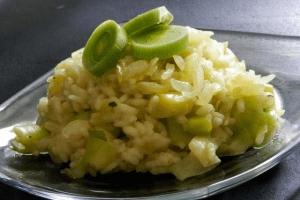 Photo: Ulrich Koepf[/caption]
Photo: Ulrich Koepf[/caption]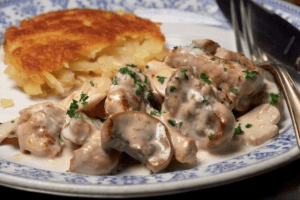 Photo: Ulrich Koepf[/caption]
Photo: Ulrich Koepf[/caption]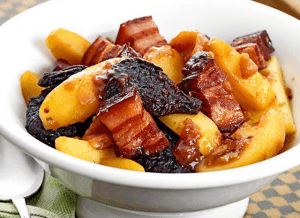 Photo: Ulrich Koepf[/caption]
Photo: Ulrich Koepf[/caption] Photo. Ulrich Koepf[/caption]
Photo. Ulrich Koepf[/caption]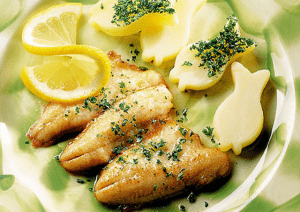 Photo: Ulrich Koepf
Photo: Ulrich Koepf
 The Dinning Room and Bar[/caption][caption id="attachment_660" align="alignright" width="169"]
The Dinning Room and Bar[/caption][caption id="attachment_660" align="alignright" width="169"] Front View of the Hotel[/caption][caption id="attachment_661" align="alignright" width="220"]
Front View of the Hotel[/caption][caption id="attachment_661" align="alignright" width="220"] Wolfgang von Goethe[/caption]
Wolfgang von Goethe[/caption]
 Hotel Caesar Cardini in Tijuana, Mexico[/caption]
Hotel Caesar Cardini in Tijuana, Mexico[/caption] Ulrich in Cosmopolitan Magazine[/caption]
Ulrich in Cosmopolitan Magazine[/caption]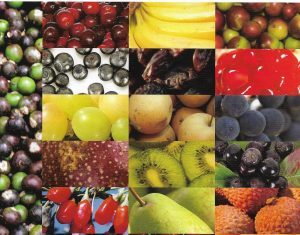
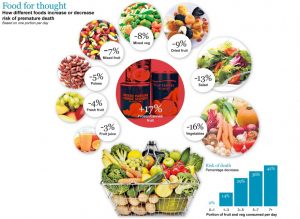


 Basel, Switzerland 1897[/caption]
Basel, Switzerland 1897[/caption]
 Palm Islands in Dubai[/caption] [caption id="attachment_2752" align="alignleft" width="247"]
Palm Islands in Dubai[/caption] [caption id="attachment_2752" align="alignleft" width="247"] Desert Ski Resort in Dubai[/caption]
Desert Ski Resort in Dubai[/caption]